5 Ways to Optimize Content Marketing with Social Media Data
A study by Clutch.com shows that written content such as articles, notes, and white papers continues to engage as much as videos. Furthermore, 27% of marketers cited writing as the most engaging form of content, ahead of videos. But with so much content out there and a limited amount of time to read it all, how can you optimize your content to make it compelling for your target audience?
As part of the release of our new eBook How to Optimize your Content Marketing Strategy with Social Media Intelligence, here are 5 best practices to perfect your marketing content.
1. Segment your audience by content type
Do not gather social data in bulk, as you may risk drowning in the volume of content. Rather, aggregate and segment posts, messages, tweets, and articles by profession, themes and age groups. This way you can assign interests groups within your target audiences.
With a social media listening tool, you can break down the demographics of netizens talking about your brand into age range, gender, profession, and interests, and further segment this information by brand and publication channel. You can also uncover the diversity of people who are talking about your brand – from celebrities, influencers, and bloggers to fans and consumers.
The example below shows a socio-demographic analysis of people who talked about Rolex on Twitter and Instagram.
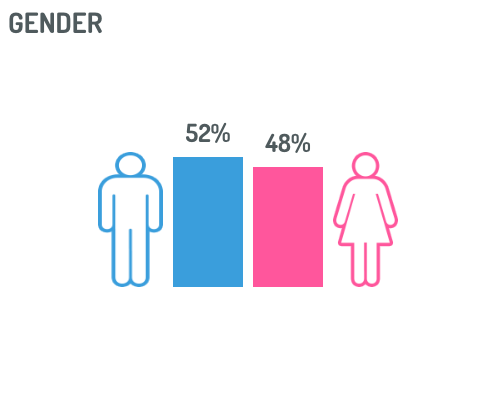
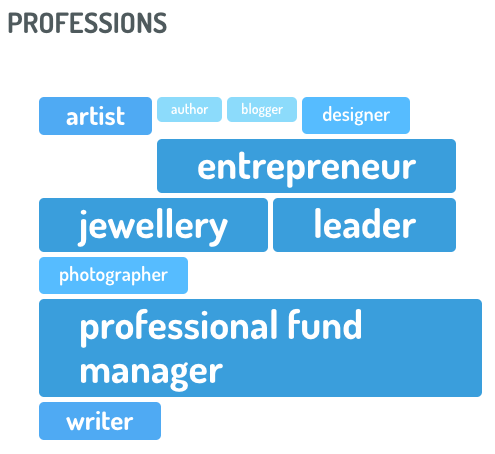

Socio-demographic analysis of internauts who discussed Rolex on Twitter and Instagram
2. Gather inspiration by listening to customers on social
30% of marketers rely on consumer studies and consumer interests reported by salespeople (Scoop.it). However, only 18% of them listen to consumer conversations and questions on social media.
Social media can provide a wealth of information to inspire your content marketing strategies. Insights can be gathered from:
- Posts from research institutes and consulting firms that capture market research, consumer studies and opinion studies.
- Common topics discussed by influencers and key opinion leaders in your sector. Tip: Do not restrict yourself by looking at your sector only. Monitor other sectors relevant to your target audience to establish where innovative strategies can be adopted.
- Competitor's posts and discussions, to understand their content strategy so as to position and differentiate yourself.
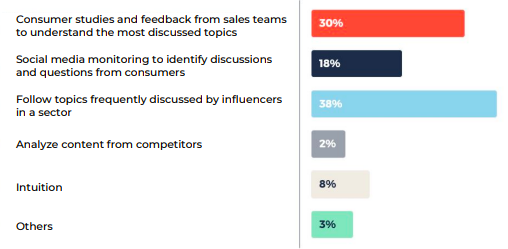
Ways marketers seek inspiration for content creation (Taken from our Ebook How to Optimize Your Content Marketing Strategy with Social Media Intelligence)
3. Understand trends beyond social media with Google Data
To identify customer’s needs and interests it helps to keep an eye on keywords associated to your brand or those of your competitors outside of social media.
Google Search is used by 92.3% of the world’s population (StatCounter, 2018) to get information about anything under (and beyond) the sun. However customers across geographic regions have different preferences. Understanding what people are searching for about your brand and the search terms they are using can help identify questions people have so you can work these answers into your content strategy, and localize communications,
For example: The analysis of keywords associated with Louis Vuitton in France demonstrates the interest of French internet users for sneakers or American stores (as seen in below image taken from Digimind Social). To learn more about the effective use of data analytics, check out: Big Data Analytics for Marketers: 4 Steps to Use It Effectively.
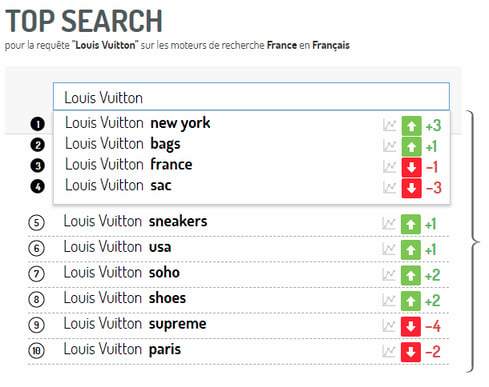
Capturing trends to adapt content through the analysis of Google search terms.
4. Benchmark content performance against competitors
Get more insights to benchmark your social ROI when you monitor your competitors’ social accounts and compare results (engagements and shares), with a Social Media Analytics tool.
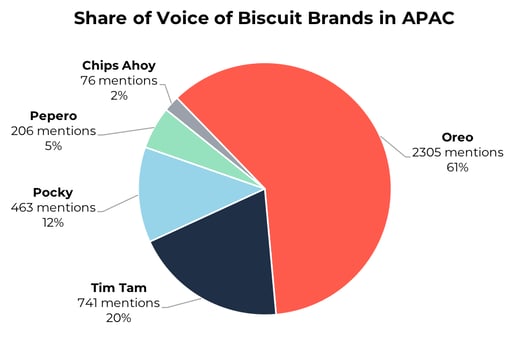
Comparison of mentions generated over a 20-day period on social media for biscuit brands in APAC (via Digimind Social Analytics)
You can then select competitors and analyze the performance of different content formats and messages. With this data, you will be able to determine your brand’s share of voice and positioning, and adjust marketing efforts according to what type of content works best with your target audience.
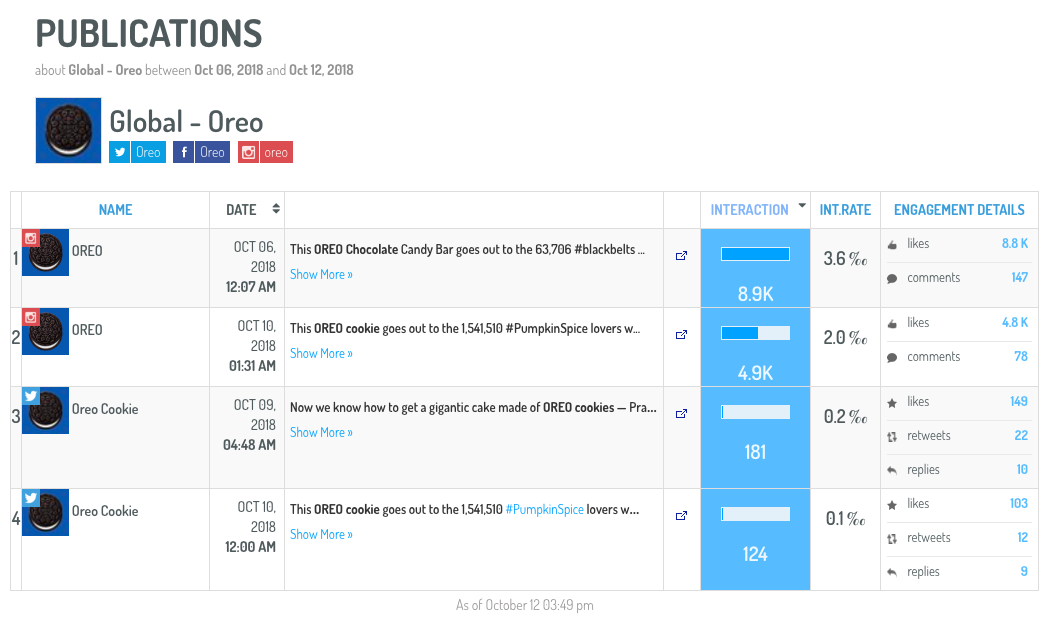
Analysis of Oreo's owned media performance on Instagram and Twitter.
5. Analyze your Social Media, Digital and Business KPIs
Evaluate the most discussed and shared topics around your brand to establish the most discussed topics in your earned media and content performance for each post, that of competitors and other major players in the sector.
KPIs to look at include: overall number of mentions, number of people who are speaking about your brand, post reach, engagement rates, shares, and sentiment.
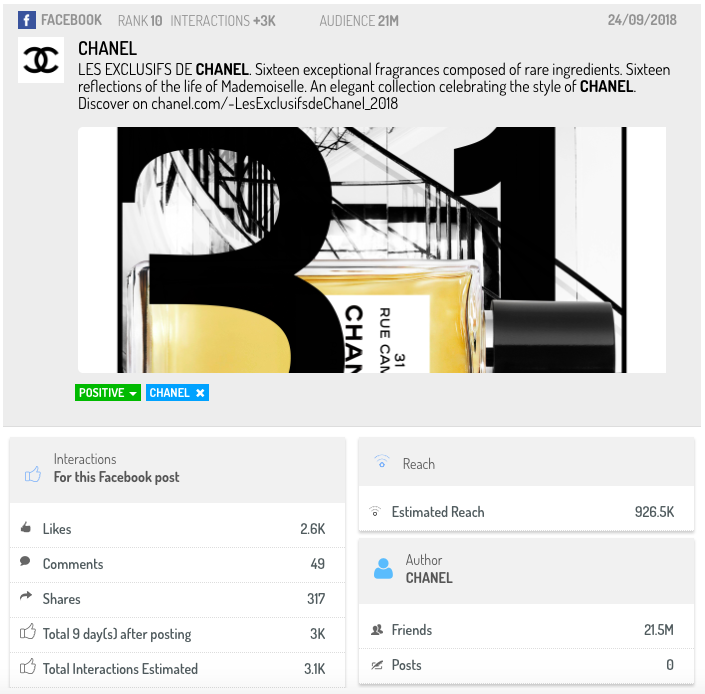
Analysis of the reach and interactions of a Facebook post for a luxury brand
In addition to social media indicators, also consider analyzing the three KPIs below over an extended period of time. Keep in mind that performance of MOFU or BOFU content must be followed for at least 6 months in order to determine its true standing.
- Social Media KPIs: Number of mentions, engagement (likes, comments and shares), reach, share of voice
- Digital Marketing KPIs: Page visits, clicks, sessions, conversion rate
- Business KPIs: Number of leads generated, cost per lead, opportunities created, sales generated
Bonus: The Content Targeting Matrix
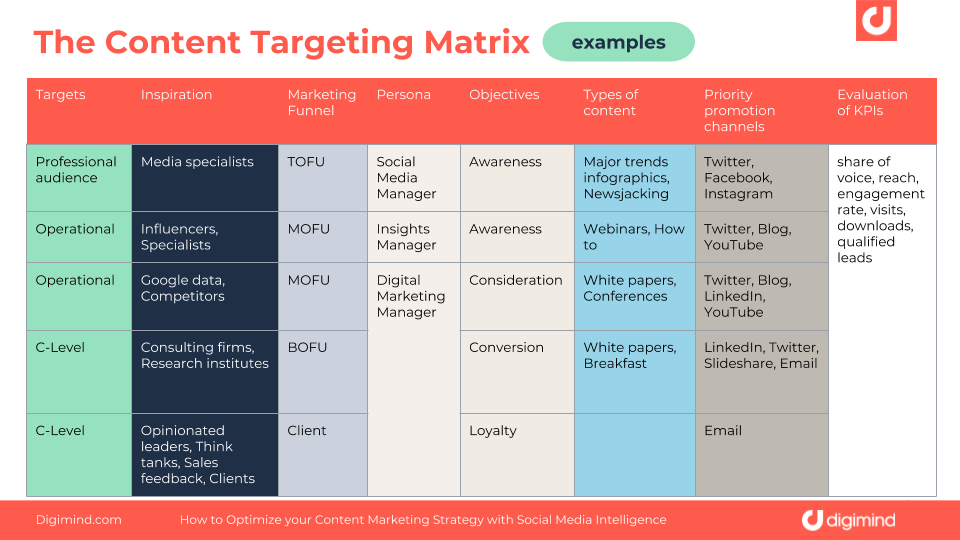
Example Content Targeting Matrix
To facilitate the development, monitoring and analysis of your content strategy, create a matrix that maps out appropriate social media channels and content types according to your marketing funnel objectives. This will help to clearly see what kind of content you should create to nurture prospects and clients, and help you properly evaluate results using the right KPIs.
Written by Sophia Guan
With a background in marketing and psychology, Sophia loves to analyze and understand consumer behaviour through observations and data. After hours you’ll find her practicing yoga or baking sourdough.

